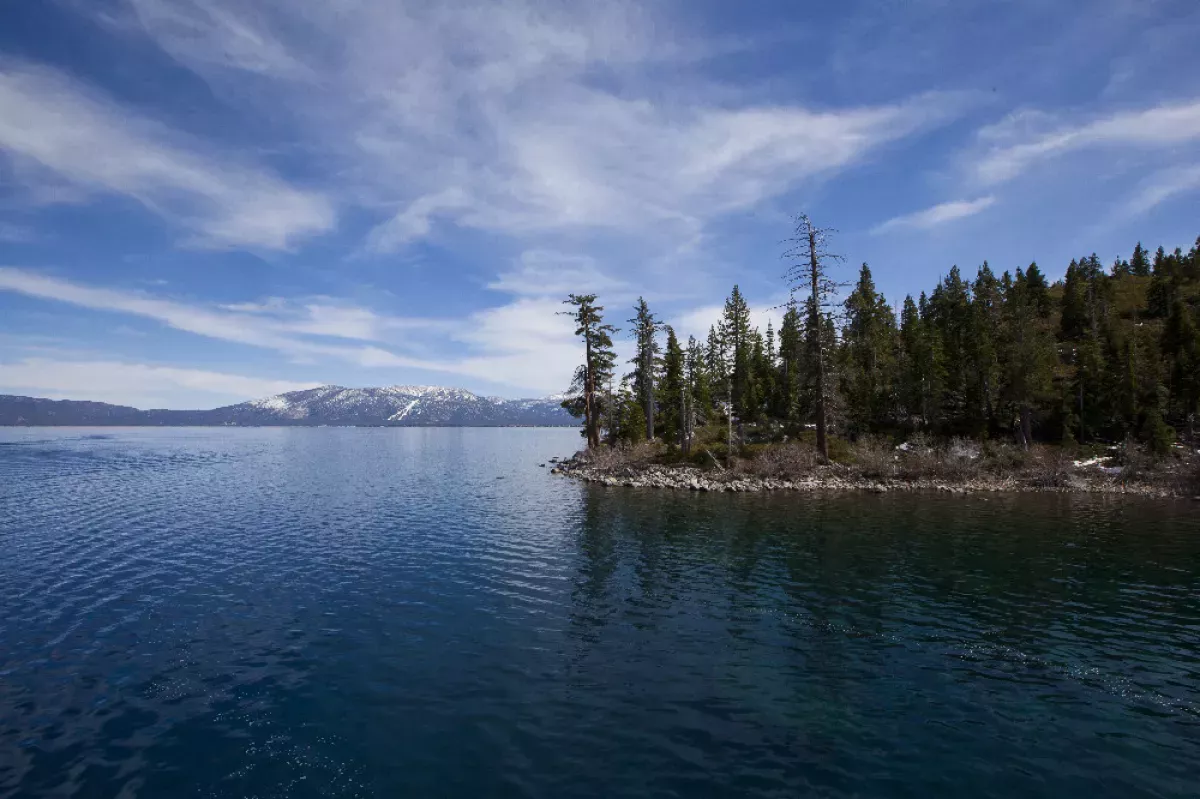Lake Tahoe is a large freshwater alpine lake located in the Sierra Nevada, straddling California and Nevada. At an elevation of 6,225 feet, it's the largest alpine lake in North America and ranks second deepest in the US at 1,645 feet. By volume, it is only surpassed by the Great Lakes.
1900: Niagara was scrapped at Tahoe City
In 1900, Niagara was scrapped at Tahoe City as the sawmills ran out of trees and people began traveling by automobile.
1910: Hayford ellipsoid of 1910
Around 1910, the Hayford ellipsoid may have been used by the United States Coast and Geodetic Survey.
1912: Congressional session attempted to designate basin as a national park
During the 1912 Congressional session, congressmen tried unsuccessfully to designate the Lake Tahoe basin as a national park.
1913: Congressional session attempted to designate basin as a national park
During the 1913 Congressional session, congressmen tried unsuccessfully to designate the Lake Tahoe basin as a national park.
1913: Lake Tahoe Dam built
In 1913, the Lake Tahoe Dam was built at the lake's only outlet, the Truckee River, at Tahoe City.
1918: Congressional session attempted to designate basin as a national park
During the 1918 Congressional session, congressmen tried unsuccessfully to designate the Lake Tahoe basin as a national park.
1926: Cal-Neva Lodge Built
In 1926, the Cal-Neva Lodge, the first casino at Lake Tahoe, was built on the North Shore in Crystal Bay by Robert Sherman.
1929: Cal-Neva Lodge Ownership Changes
In 1929, the Cal-Neva Lodge was sold to Bill Graham and Jim McKay after Norman Henry Biltz acquired the property.
1929: Dolby House Built
The west shore lakefront home of Ray and Dagmar Dolby was built in 1929. It later served as the location for multiple films.
1931: Stateline Country Club Purchase
In 1931, Bill Harrah purchased the Stateline Country Club and subsequently built Harrah's Tahoe, contributing to the expansion of casinos in the South Shore area.
1931: Nevada Legalizes Gambling
In 1931, Nevada legalized gambling. By that time, the first casino at the lake had already been open for years, marking the beginning of the casino industry in the Lake Tahoe area.
1931: Tunnel blasted through Cave Rock for Highway 50
In 1931, a tunnel was blasted through Cave Rock for Highway 50, despite protests from the Washoe tribe who consider it a sacred site.
1934: Re-introduction of North American Beaver to the Tahoe Basin
Between 1934 and 1949, the California Department of Fish and Wildlife and the U.S. Forest Service re-introduced North American beaver to the Tahoe Basin.
1934: Mail contract given to motorboat Marian B
In 1934, steamboats continued to carry a mail clerk around Lake Tahoe until the mail contract was given to the 42-foot motorboat Marian B, powered by two Chevrolet engines.
1935: Emerald (II) left Lake Tahoe
In 1935, the 60-foot Emerald (II) left Lake Tahoe to become a fishing boat in San Diego.
1937: Cal-Neva Rebuilt After Fire
In 1937, the Cal-Neva was rebuilt after a fire, demonstrating the resilience of the casino and its importance to the Lake Tahoe area.
1937: Crystal Bay Club Built
In 1937, the Crystal Bay Club was first built as the Ta-Neva-Ho, contributing to the growing casino scene at the North Shore of Lake Tahoe.
May 17, 1941: Marian B Lost
On May 17, 1941, the motorboat Marian B was lost during a storm, after which mail delivery moved ashore.
1942: Governor Stanford boiler used at Glenbrook Inn and Ranch
In 1942, the boiler of the Governor Stanford was used for heating cottages at Glenbrook Inn and Ranch.
1944: Transplant of non-native salmon
In 1944, non-native sockeye salmon were transplanted from the North Pacific to Lake Tahoe.
1945: Name Officially Changed to Lake Tahoe
In 1945, the California State Legislature reversed its previous decision, officially changing the name of the lake to Lake Tahoe.
1949: Re-introduction of North American Beaver to the Tahoe Basin
Between 1934 and 1949, the California Department of Fish and Wildlife and the U.S. Forest Service re-introduced North American beaver to the Tahoe Basin.
1955: Fred Rogers Swims Lake Tahoe
In 1955, Fred Rogers became the first person to swim the length of Lake Tahoe, marking a historic achievement.
1957: League to Save Lake Tahoe Founded
In 1957, the League to Save Lake Tahoe was founded in response to a proposal to build a four-lane highway around the lake, including a bridge over Emerald Bay. It has been an environmental watchdog for the Lake Tahoe Basin since its founding.
1960: Winter Olympics and population boom
In 1960, the completion of interstate highway links for the Winter Olympics held at Olympic Valley (then known as "Squaw Valley") resulted in a dramatic increase in development within the Lake Tahoe basin.
1963: Introduction of Opossum Shrimp
In 1963, opossum shrimp (Mysis diluviana) were introduced to Lake Tahoe to enhance the food supply for the introduced Kokanee salmon. This marked a significant change in the lake's ecosystem.
1969: Lake Tahoe Warmed
Analysis of temperature records in Lake Tahoe from 1969 to 2002 showed that the lake warmed at an average rate of 0.027 °F (0.015 °C) per year.
1969: Cal-Neva Expansion
In 1969, the Cal-Neva underwent a significant expansion, including the construction of the high-rise hotel, marking a period of growth and increased popularity for the casino.
1969: Tahoe Regional Planning Agency (TRPA) Created
In 1969, the U.S. Congress and the California and Nevada State Legislatures created a unique compact to share resources and responsibilities, establishing the Tahoe Regional Planning Agency (TRPA).
1970: Lake Tahoe mixed to a depth of at least 1,300 ft
Since 1970, Lake Tahoe has mixed to a depth of at least 1,300 ft (400 m) a total of six or seven times.
1971: Disappearance of Cladocerans
By 1971, the lake's cladoceran populations (Daphnia and Bosmina) virtually disappeared due to the opossum shrimp feeding on them, which had a negative impact on the lake's food web.
December 9, 1972: All-time minimum temperature recorded
On December 9, 1972, the all-time minimum temperature of −16 °F (−27 °C) was recorded at the Lake Tahoe Airport.
1974: The Godfather Part II Filmed at Fleur de Lac
In 1974, the film The Godfather Part II used the lakeside estate Fleur de Lac as the location of several scenes. It was formerly the Henry Kaiser estate.
1980: Supreme Court hears boundary dispute case
In 1980, the Supreme Court of the United States partially heard a case regarding the legally binding nature of the boundary surveys, invoking the doctrine of acquiescence.
1980: Amendment of the Compact with public law 96-551
In 1980, the U.S. Congress amended the Compact with public law 96-551 which designated a new agency, the Tahoe Transportation District (TTD), to facilitate and implement Basin and regional transportation improvements.
1980: Development Slowed
In 1980, the permanent residential population of Lake Tahoe exceeded 50,000, and the summer population grew to about 90,000. Since 1980s, development has slowed due to controls on land use.
1980: Lake Tahoe Interagency Monitoring Program Started
Since 1980, the Lake Tahoe Interagency Monitoring Program (LTIMP) has been measuring stream discharge and concentrations of nutrients and sediment in up to 10 tributary streams in the Lake Tahoe Basin, California-Nevada. This supports science-based environmental planning.
1987: Beaver populations on the Truckee River Reached a Density of 0.72 Colonies per Kilometer
By 1987, beaver populations on the upper and lower Truckee River had reached a density of 0.72 colonies (3.5 beavers) per kilometer.
July 22, 1988: All-time maximum temperature recorded
On July 22, 1988, the all-time maximum temperature of 99 °F (37 °C) was recorded at the Lake Tahoe Airport.
1988: Filming of Things Change
In 1988, the film Things Change was filmed at the west shore lakefront home of Ray and Dagmar Dolby. The house was built in 1929.
1996: Pineapple Express atmospheric river caused overflow
Around New Year 1996, a Pineapple Express atmospheric river event caused snow to melt, leading to the overflow of Lake Tahoe and the Truckee River, resulting in the inundation of Reno and surrounding areas.
1997: Pineapple Express atmospheric river caused overflow
Around New Year 1997, a Pineapple Express atmospheric river event caused snow to melt, leading to the overflow of Lake Tahoe and the Truckee River, resulting in the inundation of Reno and surrounding areas. The lowest Secchi depth ever recorded at 64.1 feet (19.5 m) was also recorded in 1997.
1997: Lowest Secchi depth ever recorded
In 1997, the lowest Secchi depth ever recorded for Lake Tahoe was 64.1 feet (19.5 m).
2002: Lake Tahoe Warmed
Analysis of temperature records in Lake Tahoe from 1969 to 2002 showed that the lake warmed at an average rate of 0.027 °F (0.015 °C) per year.
September 2004: Ponderosa Ranch Closes
In September 2004, the Ponderosa Ranch of the TV series Bonanza closed its doors after being sold to developer David Duffield for an undisclosed price.
2006: First Observation of Goldfish
Since 2006, goldfish have been observed in Lake Tahoe. As an invasive species, their presence poses a potential threat to the native ecosystem and water quality of the lake.
June 2007: Angora Fire Burns
In June 2007, the Angora Fire burned approximately 3,100 acres (1,300 ha) throughout the South Lake Tahoe area. The impact of potential future erosion is not yet known.
2010: Second-lowest Secchi depth recorded
In 2010, the average Secchi depth was recorded at 64.4 feet (19.6 m), which was the second lowest ever recorded for Lake Tahoe.
2011: Increase in lake clarity began
From 2011 to 2014, the clarity of Lake Tahoe increased by nearly 20 percent.
2014: Increase in lake clarity
From 2011 to 2014, the clarity of Lake Tahoe increased by nearly 20 percent.
2014: Last Weekend Film Location
In 2014, the film Last Weekend, starring Patricia Clarkson and directed by Tom Dolby and Tom Williams, used the west shore lakefront home of Ray and Dagmar Dolby as the primary location for its interiors and exteriors.
2018: Federal survey monument removed
Around 2018, a federal survey monument was removed to the Lake Tahoe Historical Society.
2019: First Discovery of Microplastics
In 2019, microplastics were found for the first time in Lake Tahoe by the Desert Research Institute. This marked a concerning discovery regarding pollution in the lake's water.
2019: Reintroduction of Cutthroat Trout
In 2019, reintroduction efforts for the Lahontan cutthroat trout, which had been completely extirpated from Lake Tahoe in the early 20th century, were initiated.
2021: NHL Hosted Outdoor Games
In 2021, the NHL hosted two outdoor games at Lake Tahoe. This was a notable event that took place at the lake that year.
2023: Updated Microplastic Measurements
In 2023, updated measurements of microplastics in Lake Tahoe revealed that the lake contained some of the highest microplastic pollution concentrations found among 38 lakes and reservoirs measured. This highlighted the severity of the pollution problem in the lake.
Mentioned in this timeline
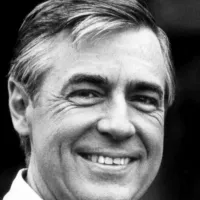
Fred Rogers known as Mister Rogers was an influential American...
California is a U S state on the Pacific Coast...
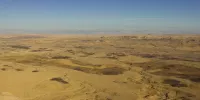
A desert is a landscape characterized by minimal precipitation leading...
Nevada a landlocked state in the Western US is the...
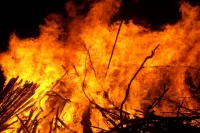
Fire is a rapid oxidation process called combustion releasing heat...
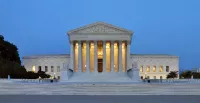
A supreme court the court of last resort in many...
Trending

7 months ago Cooper Flagg buzzes at NBA Draft Combine, projected first pick alongside Dylan Harper.
1 month ago Mega Millions and Pick 3: Lottery Results and Winning Numbers Updates
5 months ago Kyle Filipowski Shines in Summer League, Hinting at Potential Breakout Year With Jazz

5 months ago Clippers provide update on Kawhi Leonard's condition after injury struggles, future plans.

6 months ago Jennifer Garner and John Miller share passionate kiss; Ben Affleck spotted solo.

6 months ago Jaren Jackson Jr. as Potential Pistons Trade Target: Cunningham Pairing?
Popular

Candace Owens is an American conservative political commentator and author...

Ilhan Omar is an American politician currently serving as the...

XXXTentacion born Jahseh Dwayne Ricardo Onfroy was a controversial yet...

Frederick Christ Trump Sr - was an American real estate...

Charles James Charlie Kirk was a prominent American right-wing political...

Cristiano Ronaldo often nicknamed CR is a Portuguese professional footballer...
